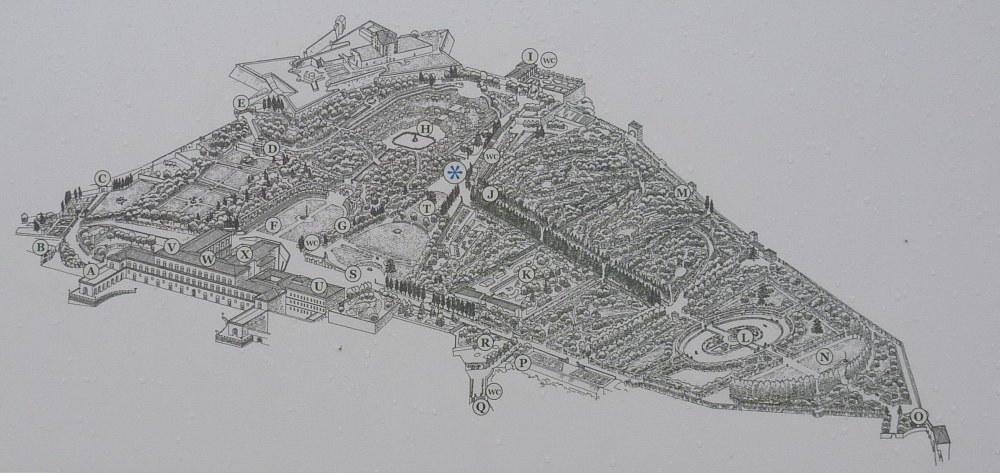
The End of the Suspense
Sunday March 27, 2011
..those ellipsis from my last post taunting me. Reminding me I have not written in so many months. There are two reasons: everyone's favorite excuse--especially for self-important blog-writers--"I was really busy" and the true story. I just didn't want to share. I wanted to keep it to myself for as long as possible, because it was that meaningful of an experience. Even now, I will limit photos and commentary to the designs of the incredible gardens of Florence. Wouldn't want to deviate from the focus by blathering on and on about the generous family that hosted me who will hopefully now be lifelong friends, or being followed around with cashmere blankets and prosecco by the staff of the glorious Il Salviatino, or being alone in the gallery with the David in tearful awe. This is not a travel blog.
So, without further delay, Boboli...
With Paolo, the head gardener of Boboli for decades, and Paolo, one of my hosts, I spent several hours touring the exquisitely maintained grounds of the Palazzo Pitti. Paolo I knew every answer to every question I asked. He told of the centuries-long history and evolution of the gardens, revealed the tricks that were used by the various designers throughout the ages, opened every door and unlocked every gate, and explained the importance of water in and to the garden and the city. His dedication to his field was a recurring theme among everyone I met; their passion and knowledge were inspiring.
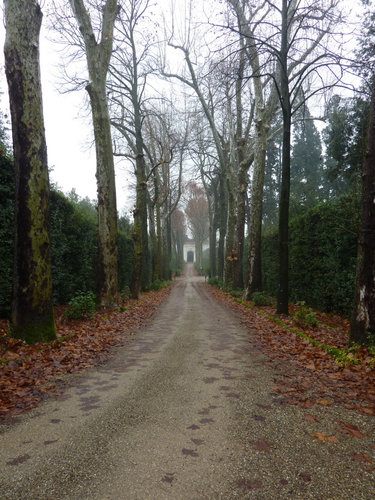
The back entrance to the garden, with the conservatory at the end of the allee. Even the secondary spaces are well-considered and well-maintained.
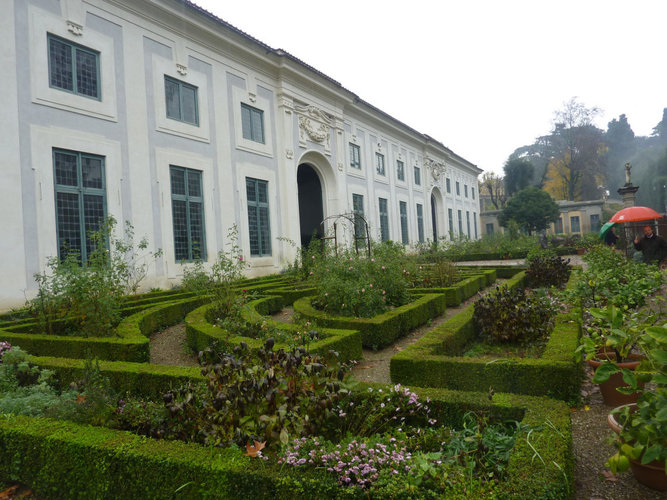
The parterre garden outside the conservatory. In the warm months, the terracotta pots are placed within the beds. The arches of the architecture are reflected within the design of the garden beds.
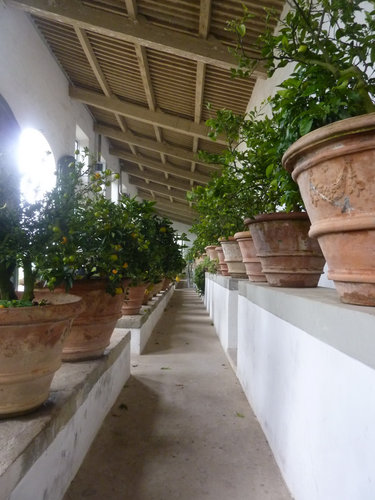
The function of providing light, air and warmth results in the dramatic form of long, stacked rows of hundreds of citrus trees in characteristic terracotta pots.
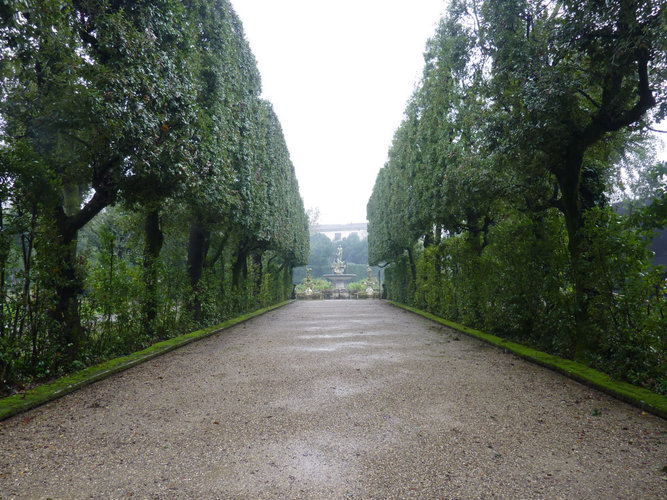
The water garden at the bottom of the hill collects all of the water from the site into a large moat with a central fountain.
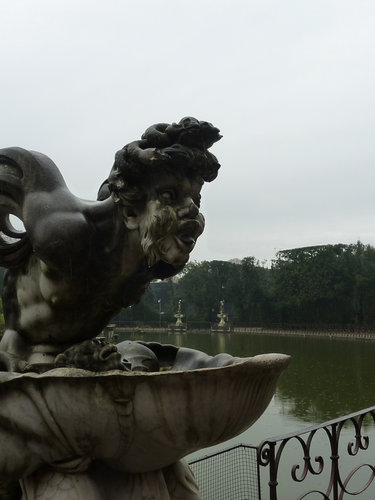
One of the secondary fountains, with the moat behind
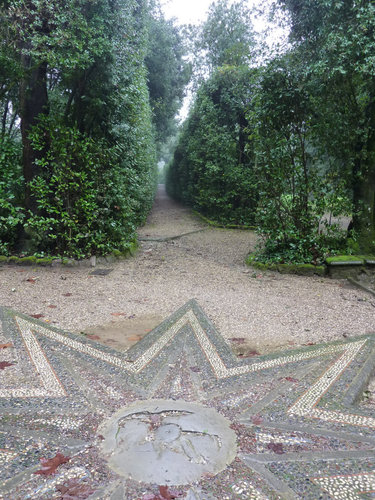
A compass made of small river stones in the center of the gravel path. Unsurprisingly, the Italians are master masons.
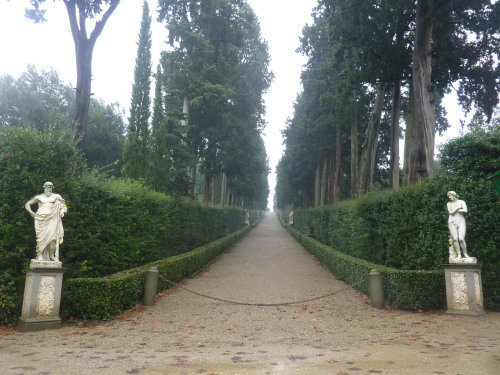
The allee uphill is lined with statuary and hedges. The hedges actually narrow as they go uphill, dramaticizing the perspective. I am testing this trick in one of my own projects, a garden in Paris.
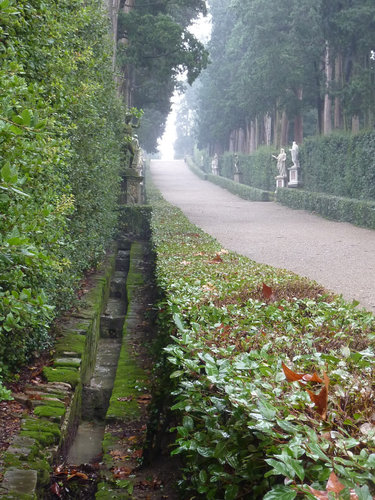
Hidden behind the hedges is an ancient system of gutters that funnels runoff down to the water garden. The gutters are themselves beautiful and a far cry from our concrete eyesores today.

These little green tunnels run axially across the central allee. Paolo II explained that in the days of Medici, the hedges were used for hunting birds by draping them with nets and capturing them within.
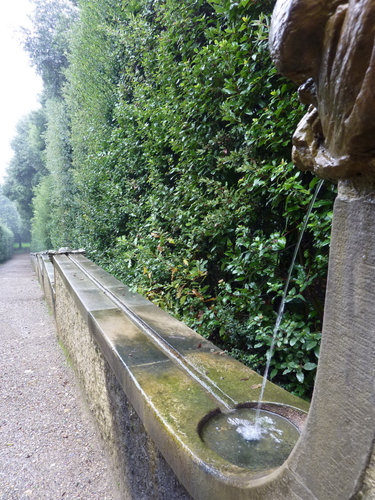
Venturing down one of the green tunnels, I could hear the trickle of water. The source was this fountain, which pumps water from below ground to expose it, as a decorative reminder of the source of the life of the garden itself, according to Paolo I.
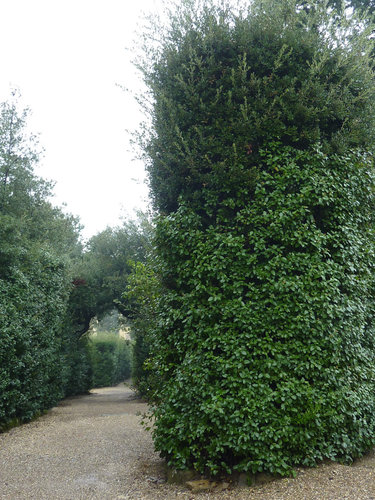
On close inspection, the hedges consist of multiple species of plants. This was also for bird trapping, because the different berries at different times of year ensured a longer hunting season.
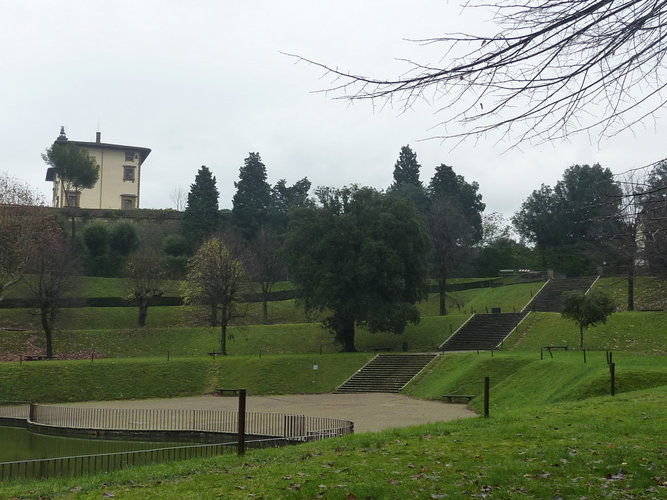
This amphitheater-shaped terrace garden lies at the top of the hill and end of the allee. In its Medici-era incarnation, it was a garden of annual and perennial flowers. It had since been converted (about 150 years ago) to an orchard to reduce maintenance.
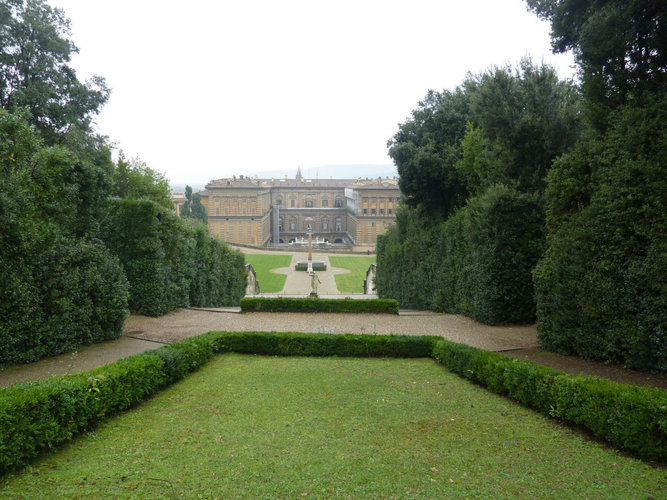
The view of Palazzo Pitti from the top of the hill
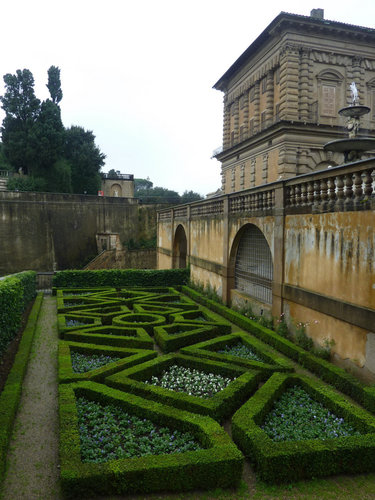
An opportunity for an intricate bed design, this is primarily a viewing garden to be seen from the upper stories of the adjacent building.
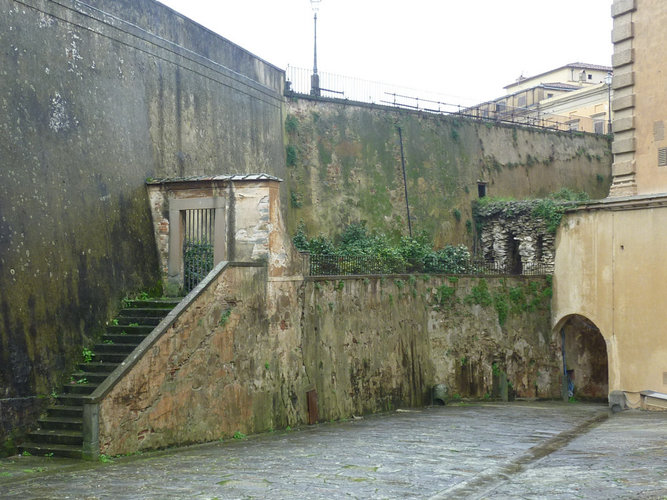
The oldest garden of the palace, the medicinal Camellia sasanqua walk. It doesn't quite fit with the grandeur of the rest of Boboli but is a testament to the Italian respect for history.
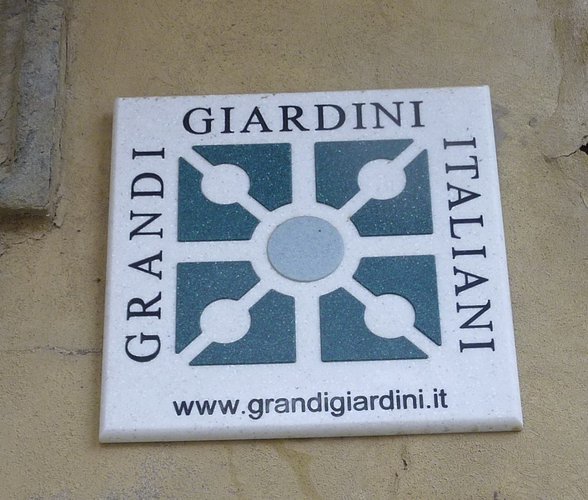
Agreed.
















